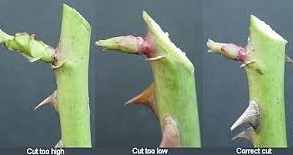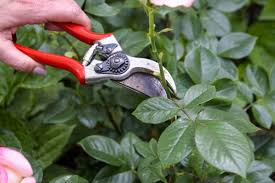A Guide to Pruning
A Guide To Pruning New Zealand Native Plants

Native New Zealand plants are delightful to have in your garden nevertheless they are not maintenance free. While the majority of New Zealand plants need less care than many exotic plants, they do profit greatly from some fertilizing, pruning and watering. Pruning promotes a healthy growth, extends the life of short lived plants and enhances a grander display of flowers.
Types of Pruning
Tip Pruning
To promote lateral growth and therefore bushier plants, regular tip pruning of the soft new growth is favoured over infrequent hard pruning and should be initiated when plants are very young, desirably at seedling or rooted cutting stage. Tip pruning is best commenced after flowering and during the growing season for faster outcomes. Pruning too late in the season bares the risk of decreasing the next season’s flowers. Constantly carry secateurs when you’re out and about in the garden as this allows you to effortlessly practice tip pruning.
Universal Pruning
When pruning to regulate unwanted growth, it is better to only make clean cuts that slope away from buds. Cut close and parallel to existing branches and leaf nodes, but not level with them.
With large branches, first cut the bark below, then make the top cut, this prevents tearing of the bark as the branch falls away.
Use the plant’s natural habit as a guide. If it is slow-growing, compact and well-shaped, then only light pruning is required to tidy it
up. If it is fast growing, then further pinching-out or pruning should be carried out. Prune the whole shrub all at once, that way even growth will ensue all over the plant.
It is best not to prune in winter as the resulting new growth can easily be damaged by cold temperatures. When cutting into plants that flower on old wood such as many Leptospermums, Melaleucas and Hakeas, be conscious that you may lose next year’s flowers.
Pruning Screen and Hedge Plants

Successful screen and hedge plants need to be given consistent but relatively delicate pruning all over to encourage and preserve dense growth. If you are using this type of pruning for Lilly pillies such as: Syzygium smithii and various forms, it will keep them bushy to the ground.
Pruning to Mend Damage
When branches are broken or attacked by insects and/or borers, the branch should be pruned back to clean unspoiled wood and close to a limb or leaf node. If left in a damaged state, branches are prone to infection and dying back.
Pruning to Improve Blossoming
Elimination of old flowers should be commenced after the flower is finished. This way the plant does not put its vitality into producing seed. It also has the same effect as tip pruning as it enhances new lateral growth and hence more flowers next season. Callistemons, and fine-leaved Melaleucas definitely benefit from having the top two thirds of their flowers detached and is an essential pruning action.
Pruning to Decrease New Growth
Pruning flush with the trunk should result in no new leaf growth. This is ideal if you are pruning lower branches off a shrub to make it more tree like.
Pruning When Direr Outcomes Are Needed
Trying to keep bulky plants to a convenient size by pruning is hard work and is best done frequently through-out the year. Be aware that hard pruning into old wood may possibly kill some plants. If you have any old woody shrubs that are more of a monstrosity than an asset in the garden, arm yourself with secateurs and a pruning saw and practice on it.
The simplest way to invigorate Callistemons, fine leaved Melaleucas and Leptospermums is to lop them off at ground level. If carried out in spring they will rapidly put out new shoots and grow into bushy shrubs with striking healthy foliage. Water well to maximise new growth. Radical pruning of older more senile Grevillea
s is not always successful. If the plant has gotten to the point where you have nothing to lose, prune hard and see what happens.
When pruning large weighty branches, make the initial cut about 150 mm further out than where you need to make the final cut. When the heavy branch has been removed, make an additional cut to clean up, this minimises tearing of the bark. Note that untidy cuts or torn bark can create entry points of fungal diseases and other such hazardous elements.
Maintaining Your Pruning Tools
Be sure to use sharp tools and disinfect them by scrubbing with methylated spirits. Blunted tools leave ragged edges on the branch and are an invitation for disease to attack your plants.
Don’t have the required tools or enough time? You can always take the hassle out of pruning and give Jim’s Mowing a call on 0800 454 654 or book online for a free, no obligation quote!


